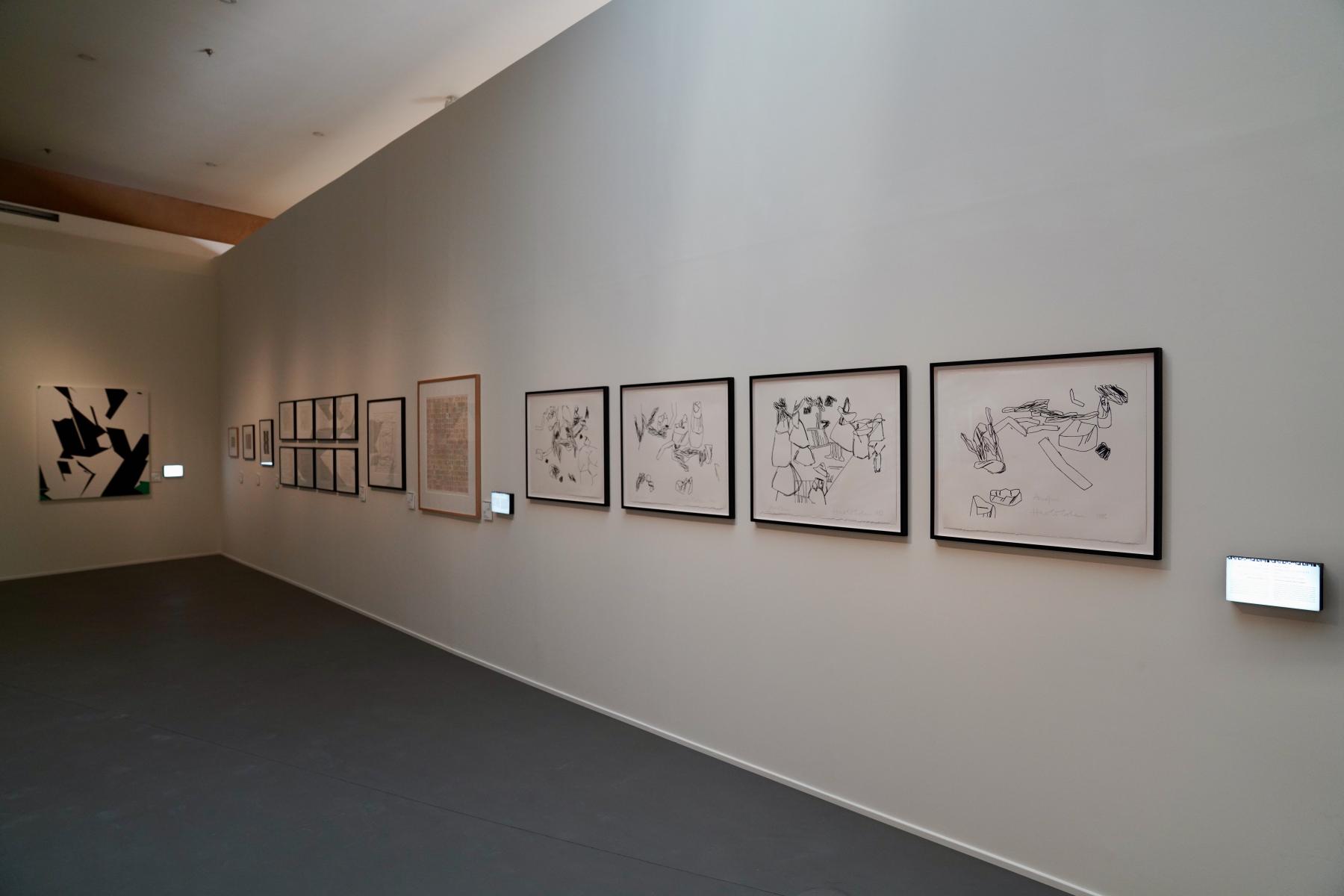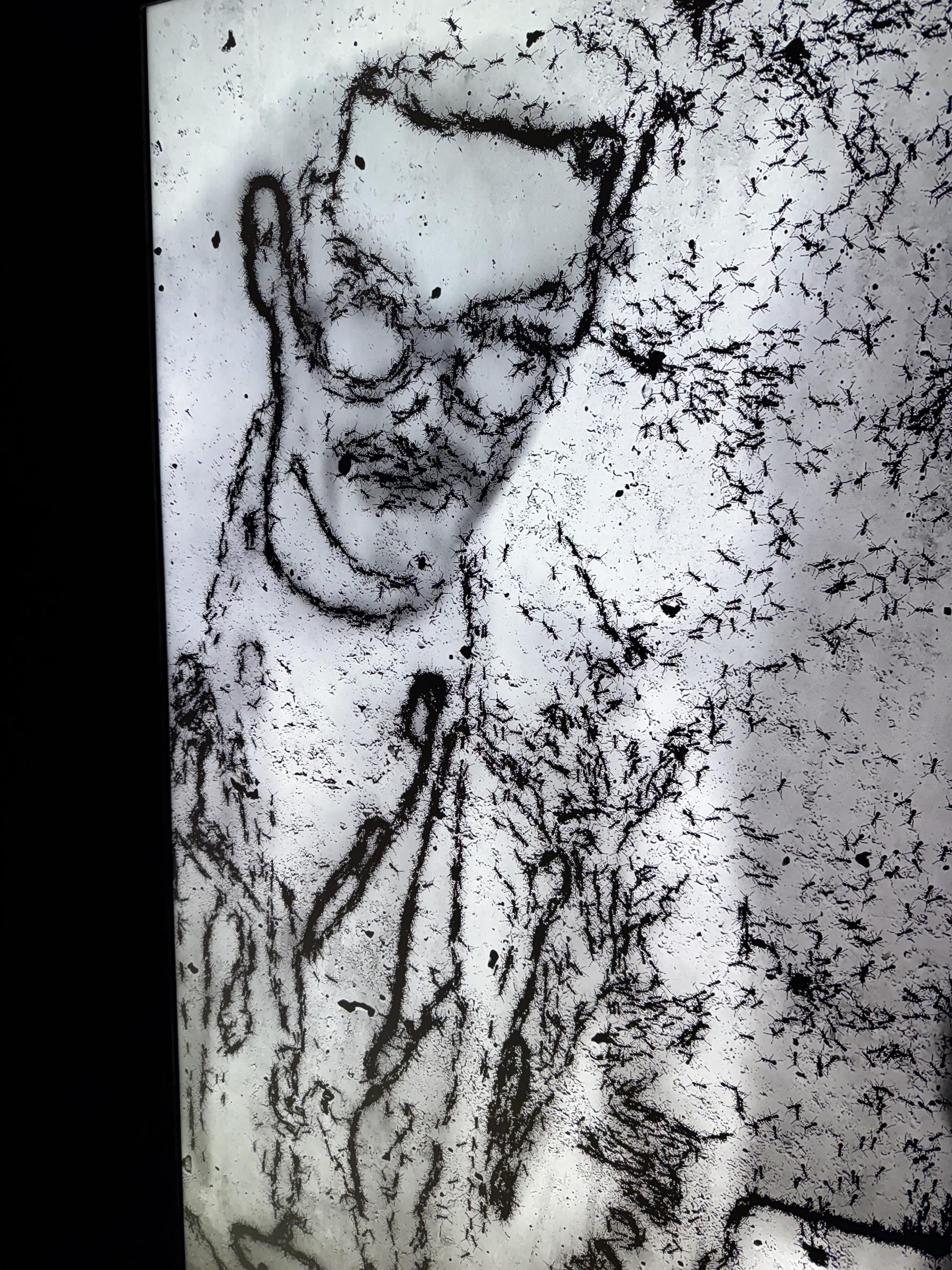« Art Must Be Artificial : Perspectives of AI in the Visual Arts »
@ Diriyah Art Futures - Kingdom of Saudi Arabia
On November 26th 2024, the Ministry of Culture of Saudi Arabia has officially opened the inaugural show of its brand-new museum DIRIYAH ART FUTURES based on the leading Computing art collection of Guy Ullens. “Art Must Be Artificial: Perspectives of AI in the Visual Arts”, curated by Jerome Neutres, presents a survey of the historical and current art practices of international leading artists sharing the use of computing technology, including some major Saudi artists. The unveiling of the exhibition took place in presence of Mona Khazindar, president of the Museum commission of the Ministry of Culture of Saudi Arabia, and Guy Ullens. On this occasion, the Ministry of Culture has gifted to Guy Ullens an original artwork by leading digital artist ARC from Saudi Arabia, to thank the Ullens Collection for the generous loan of some 50 works presented in this spectacular show.
“Art Must Be Artificial: Perspectives of AI in the Visual Arts” aims to present how the pioneers of yesterday and the emerging figures of today are depicting a meaningful history of the evolution of the homo digitalis, the new human civilization we are experiencing. To demonstrate that computing technology is a true medium of art, opening an infinity of visual possibilities – and not an experimental school nor a temporary art movement. “Computing is a techno-logy, meaning a technic which is also a language”, said late pioneer of generative art Edmond Couchot. Computer isn’t any tool like a brush, but a true language. Since the early 1960s, but mostly through the last two decades, new artistic practices have emerged along with the spread of digital technology. And the artists we present here have tried to liberate that language from its communicative functions to make it a poetic platform. Computing art: was born. Using algorithms and generativity to create new shapes and new colors, creators like Vera Molnar, Manfred Mohr, Riyoji Ikeda, Refik Anadol, have pushed the borders of visual arts, opening new territories for the artists. Artists needed a new medium to express their vision of a new upcoming world, where computer will be the companion of everyone’s life and activity. Today, while the whole world is working with AI, and the computer becoming everybody’s best friend, the artists of Computing art are showing their works in all the major museums of the world. This computing palette has placed the viewer at the heart of the artistic experience and brought to art the dream of an unlimited artwork, close to an organic creation - it is art with a nervous system. Is the computing art generating an artificial nature, or an Extra-Nature as Miguel Chevalier says? It is interesting to notice that nature is a recurrent and significant subject of generative artworks. Today’s artists can play with sophisticated algorithms and machine learning techniques. Computers offer an artificial intelligence capable of interpreting images, recognizing visuals, and producing forms itself. Is AI evolving from an ideal assistant to a true artist? The growing potential of computational devices raises the question of an artificial imagination. In 1956, pioneer of robotic art Nicolas Schöffer said: “Now, the role of the artist is not more to create a work, but to create the creation”. Here we are.






























